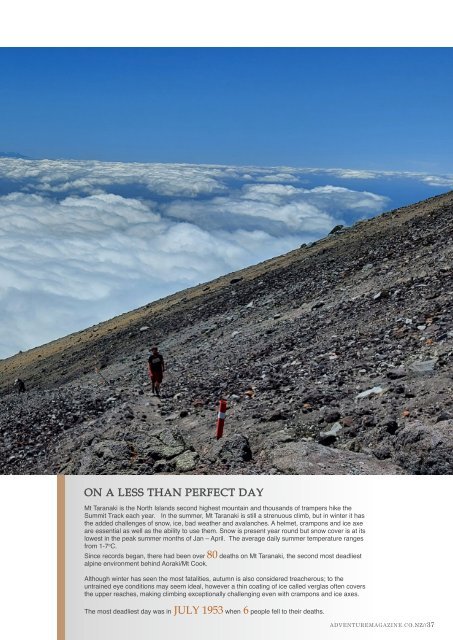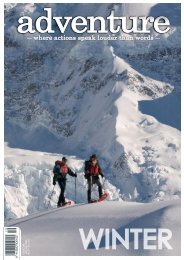You also want an ePaper? Increase the reach of your titles
YUMPU automatically turns print PDFs into web optimized ePapers that Google loves.
ON A LESS THAN PERFECT DAY<br />
Mt Taranaki is the North Islands second highest mountain and thousands of trampers hike the<br />
Summit Track each year. In the summer, Mt Taranaki is still a strenuous climb, but in winter it has<br />
the added challenges of snow, ice, bad weather and avalanches. A helmet, crampons and ice axe<br />
are essential as well as the ability to use them. Snow is present year round but snow cover is at its<br />
lowest in the peak summer months of Jan – April. The average daily summer temperature ranges<br />
from 1-7 o C.<br />
Since records began, there had been over 80 deaths on Mt Taranaki, the second most deadliest<br />
alpine environment behind Aoraki/Mt Cook.<br />
Although winter has seen the most fatalities, autumn is also considered treacherous; to the<br />
untrained eye conditions may seem ideal, however a thin coating of ice called verglas often covers<br />
the upper reaches, making climbing exceptionally challenging even with crampons and ice axes.<br />
The most deadliest day was in JULY 1953 when 6 people fell to their deaths.<br />
ADVENTUREMAGAZINE.CO.NZ//37
















